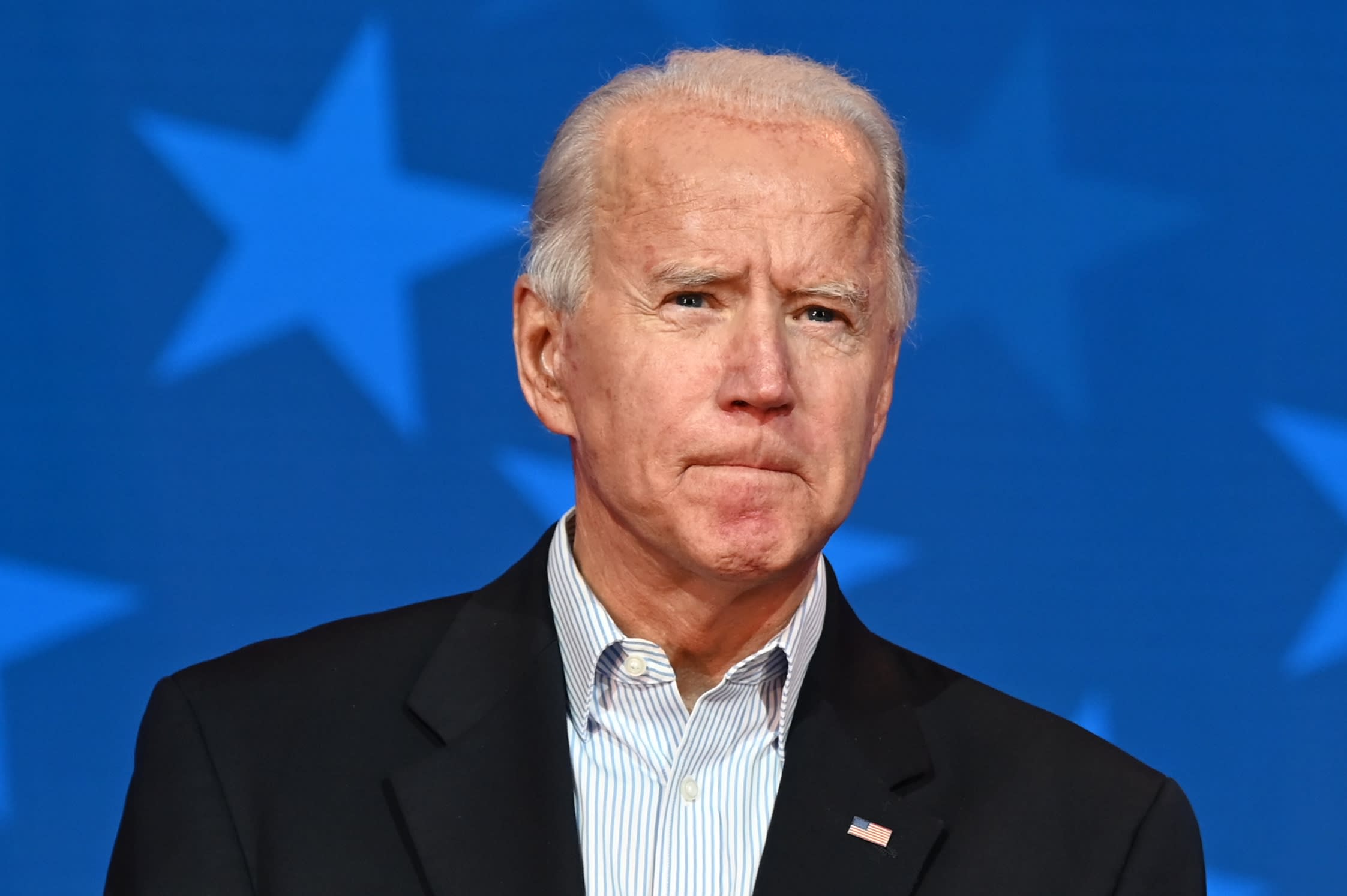
Democratic Presidential candidate Joe Biden looks on while speaking at the Queen venue in Wilmington, Delaware, on November 5, 2020.
Jim Watson | AFP | Getty Images
SINGAPORE — U.S. President-elect Joe Biden has made tackling climate change one of his priorities — but his goals would be harder to achieve without China’s involvement, according to energy consultancy Wood Mackenzie.
U.S.-China tensions, which escalated after President Donald Trump took office in 2017, are not likely to go away under Biden. But some experts have pointed out that climate change could be one area the U.S. and China might see eye-to-eye.
Biden’s climate goals would put the U.S. in “a much stronger position on climate change leadership,” according to Gavin Thompson, Wood Mackenzie’s Asia Pacific vice chairman for energy. It remains to be seen whether that strength would be a source of conflict or an opportunity to collaborate with China, he wrote in a blog post on Wednesday.
The president-elect’s climate plan includes returning the U.S. to the Paris Agreement that, among other things, aims to cap a rise in global temperatures. Biden also wants his country to reach net-zero emissions no later than 2050.
“Achieving net-zero is fundamentally about taking action at home, but at the same time the Biden administration’s broader goals on climate change will be harder to achieve without actively engaging with Beijing,” Thompson said.
“Agreeing targets, measuring progress and penalising non-compliance will be more achievable through multilateral collaboration. China is critical to this, not only in terms of domestic policy but also the ability to help move other countries towards change,” he added.
… the Biden administration’s broader goals on climate change will be harder to achieve without actively engaging with Beijing.
Gavin Thompson
Wood Mackenzie
Biden acknowledged the importance of getting China involved. His climate plan, posted on his campaign website, laid out how his future administration would engage China:
- Make future bilateral U.S.-China agreements on carbon mitigation;
- Seek a commitment among G20 countries — which include China — to stop subsidizing high-carbon projects internationally;
- Work with partners to offer countries in the Belt and Road Initiative alternative sources of financing for lower-carbon energy projects.
The Belt and Road Initiative is a massive infrastructure project that many analysts and critics see as China’s way of spreading its global influence through lending.
The initiative — which involves a massive network of transportation links stretching from Asia to the Middle East, Africa and Europe — has also been criticized for exacerbating harm to environment. A World Bank report last year estimated that transport infrastructure under the program could increase carbon dioxide emissions by 0.3% worldwide.
Source of conflict
China’s dominance in clean energy technology could contribute to its conflict with the U.S., said Thompson.
The Asian economic giant is a leader in manufacturing solar panels and dominates the global supply chain of batteries, he wrote. The country looks likely to continue developing other clean technology to “accelerate not only its own energy transition but to also dominate exports to other markets,” he added.
“Much of its clean energy technology is already relatively free from American content,” said Thompson, pointing out that China has made plans to increase spending on research and development on those technology to get around any U.S. supply chain restrictions.
The perception that China is further edging out the U.S. in clean energy technology could increase the pressure on the Biden administration, according to Thompson.
“As China ramps up investment, this could irk a Biden administration intent on protecting domestic jobs and ensuring that the country’s energy future is ‘made in all of America by all of America’s workers.'”
WATCH: Who is leading in renewable energy?
Source: CNBC
